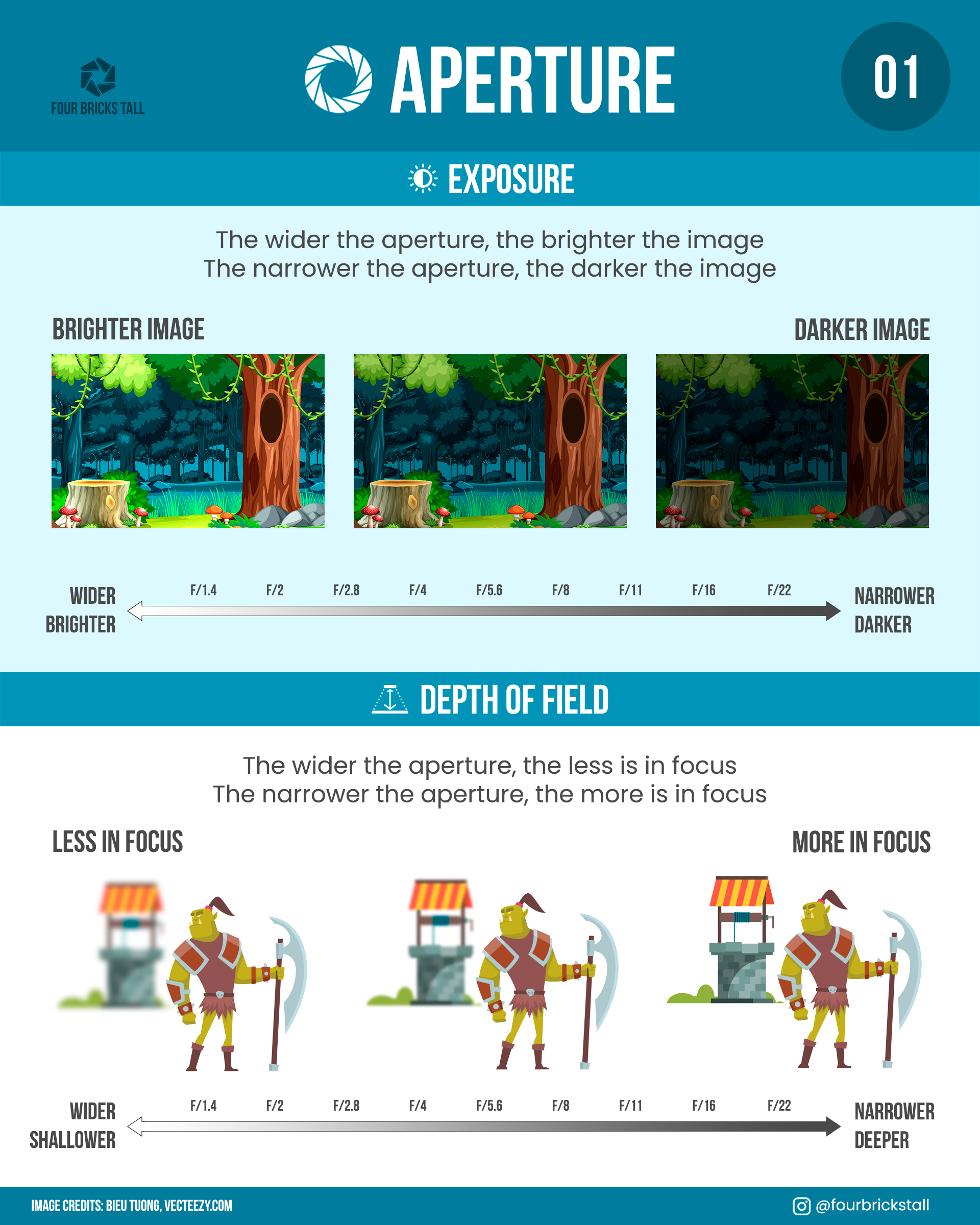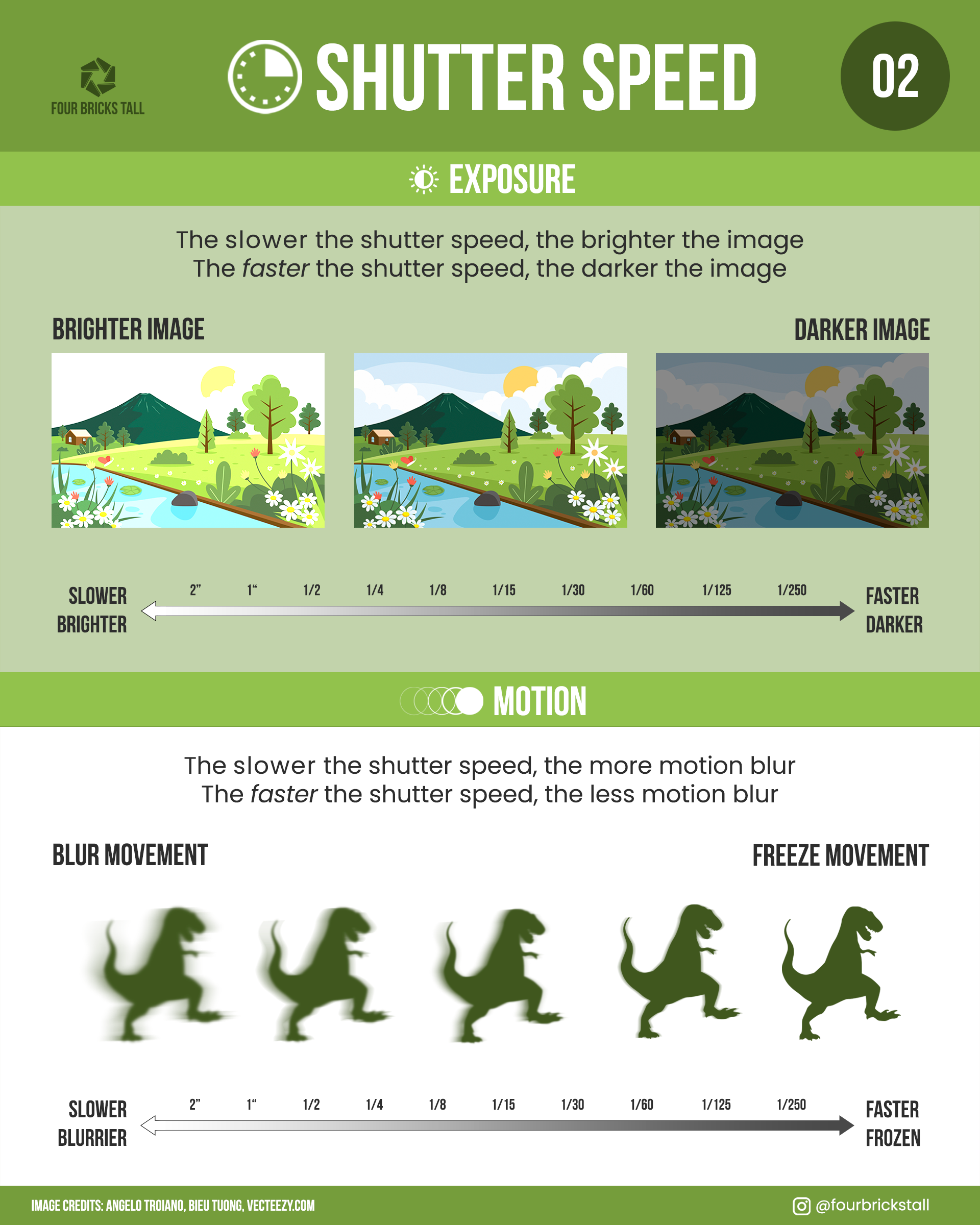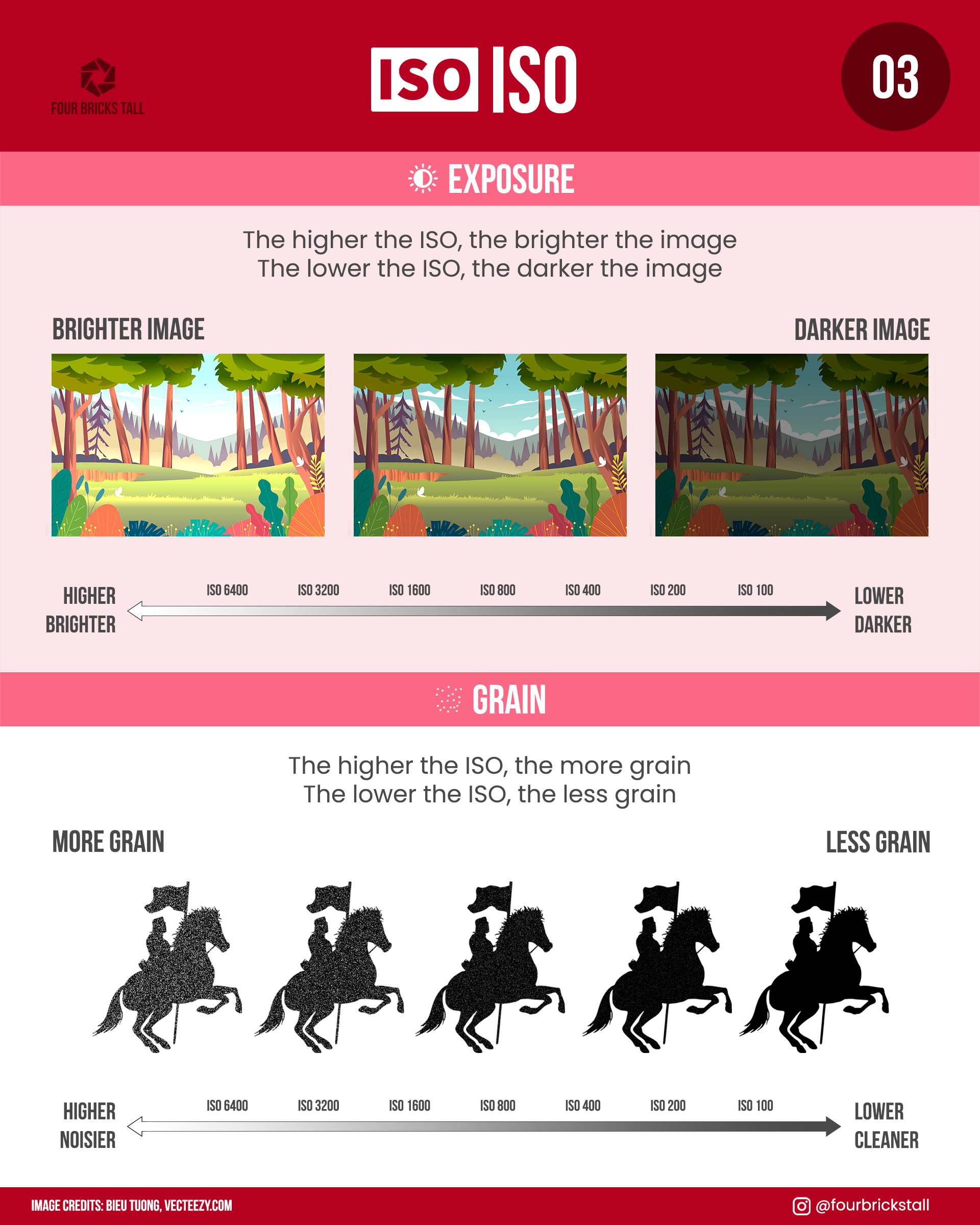Now onto the fun part: using aperture and shutter speed as creative tools.
Both aperture and shutter speed control exposure, but also have another effect that can help you tell better stories and create moods in your toy photography.
It’s often best to begin by making these creative decisions first and then make adjustments to the other settings to get the exposure we want after we decide how the photo should look and feel.
Depth of Field
The Depth of Field (DoF) is a powerful storytelling technique that determines how much of a scene is in focus. It could be deep, which means the photo is pretty sharp throughout. Or it could be shallow, where just a slice of the photo is in focus.

What’s “right” for your photo depends on the story you want to tell. Most portraits will have a shallow DoF so that only the subject is in sharp focus while everything else is out of focus. More cinematic shots typically have a deeper DoF to show the environment.
So knowing what you want to show or not show will determine what DoF you might want to use.
How to control DoF
DoF is controlled by the aperture. On a mirrorless or DSLR camera, you can change the aperture by moving a dial. But most phone cameras just have a single fixed aperture so you can’t change the DoF that way. (There are two other ways to affect DoF but we’ll get into that stuff later.)
A wide or large aperture like f/1.4 to f/2.8 is a big opening that results in a shallower DoF — the area of sharpness in the photo is thin.
A narrow or small aperture f/11 to f/22 is a small opening that results in a deeper DoF — the area of sharpness in the photo is thick.
The larger the aperture, the shallower the area of focus. The smaller the aperture, the deeper the focus.
To use this technical knowledge creatively, you should decide what DoF serves your story best.
If the environment isn’t important to the story, for example, then you can work with a shallow DoF to isolate the subject. You’d use a wider aperture.
If you need to include more details about what’s around the scene, then adjust your DoF so that it is deeper by making the aperture smaller.
Long Exposure
Long exposure is a technique used to show the effect of time passing in a single photo. It can make photos look dreamy, otherworldly, or full of action and movement.

It’s not unusual to see toy photographers capturing movement by freezing dust particles in the air or creating a hazy effect with wafting mist, for example. There are other great effects you can create like motion blurs on subjects and backgrounds to show the passing time.
How to control exposure time
Long exposure is really about capturing time, and the control to do that is the shutter speed.
To freeze thrown pebbles or falling water drops in place, you might need a shorter or faster shutter speed like 1/1000.
To create motion trails, you might need a longer or slower shutter speed like 1 second.
Unlike with DoF, using shutter speeds creatively requires some trial and error since you can’t readily see the effect until the exposure is over.
The right shutter speed depends on the speed the subject is moving and the effect you want.
For example, if you want to capture falling rain, you need a faster shutter speed in order to make out the droplets. But if you would like longer streaks of rain rather than drops, you’ll need to make your shutter speed slower.
Download my free toy photography cheatsheets



